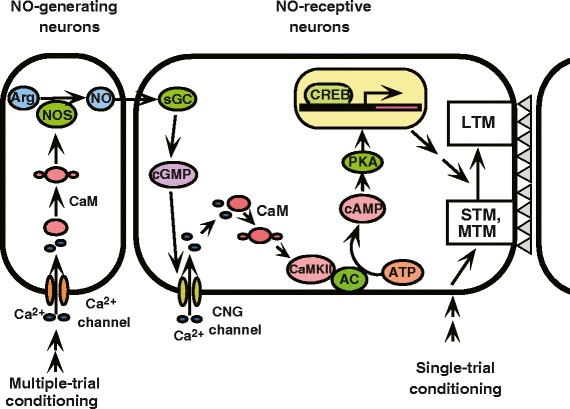Figure 7.

A model proposed to account for the signaling cascade underlying LTM formation in crickets. Single-trial conditioning induces only short-term synaptic plasticity that underlies amnesic treatment-sensitive short-term memory (STM) and amnesic-treatment resistant mid-term memory (MTM). Multiple-trial conditioning activates the NO-cGMP system, and this in turn activates adenylyl cyclase (AC) and then PKA via the cyclic nucleotide-gated (CNG) channel, calcium-calmodulin (CAM) system and CaM kinase II (CaMKII). Activation of PKA is assumed to activate a transcription factor, cAMP-responsive element-binding protein (CREB), which leads to protein synthesis that is necessary to achieve long-term plasticity of synaptic connection (a column of gray triangles) to other neurons assumed to be necessary for LTM. Arg: arginine, NOS: NO synthase, sGC: soluble guanylyl cyclase. We speculate that outer Kenyon cells generate NO and inner Kenyon cells receive NO to achieve long-term synaptic plasticity for LTM formation [38]. Modified from Mizunami et al. [36].
